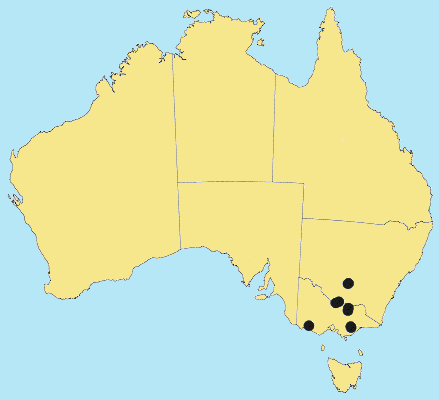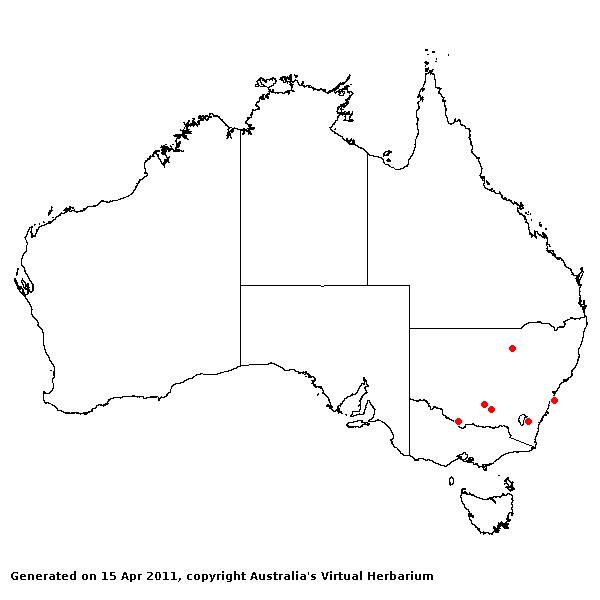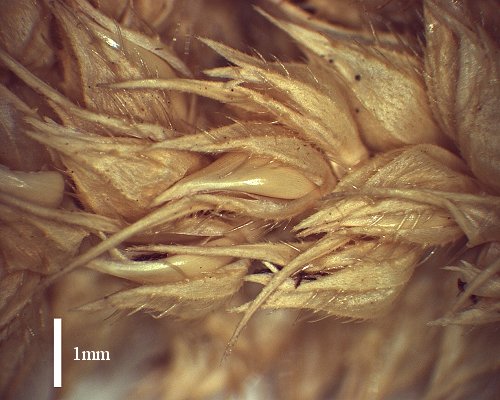Echinochloa muricata var. microstachya* Wiegand. Rhodora 23(267): 58–60 (1921).
Classification. (GPWG 2001) : Subfamily Panicoideae. Paniceae.
Type of Basionym or Protologue Information: HT: Palmer 97, USA: New York: Tompkins Co.: Ithaca (GH).
Key references (books and floras): [2002] D.Sharp & B.K.Simon, AusGrass, Grasses of Australia (as E. muricata), [2008] S.W.L.Jacobs, R.D.B.Walley & D.J.B.Wheeler, Grasses of New South Wales (228).
Illustrations: [2008] S.W.L.Jacobs, R.D.B.Whalley & D.J.B.Wheeler, Grasses of New South Wales, 4th edn (228).
Habit. Annual. Rhizomes absent. Stolons absent. Culms erect or geniculately ascending, 50–150 cm tall, 2–4 -noded. Mid-culm nodes glabrous. Leaf-sheaths glabrous on surface. Ligule absent. Leaf-blades 7–20 cm long, 4–11 mm wide. Leaf-blade surface smooth, glabrous.
Inflorescence. Inflorescence compound, a panicle of racemes. Racemes 8–15, spreading, 2–8 cm long. Central inflorescence axis 6–30 cm long.
Spikelets. Spikelets pedicelled. Fertile spikelets 2-flowered, the lower floret barren (rarely male), the upper fertile, comprising 1 basal sterile florets, comprising 1 fertile floret(s), without rachilla extension, elliptic or ovate, dorsally compressed, 3–4 mm long. Rhachilla internodes brief up to lowest fertile floret.
Glumes. Glumes dissimilar, thinner than fertile lemma. Lower glume ovate, membranous, without keels, 3–5 -nerved. Lower glume apex mucronate or awned. Upper glume ovate, 3–3.7 mm long, membranous, without keels, 5 -nerved. Upper glume surface indumented. Upper glume apex mucronate or awned. Florets. Basal sterile florets 1, barren, with palea. Lemma of lower sterile floret 100 % of length of spikelet, membranous, 5 -nerved, muticous or awned.
Fertile lemma 2.5–3.8 mm long, without keel. Lemma apex mucronate. Anthers 3. Grain 1.2–1.9 mm long.
Continental Distribution: Australasia and North America.
Australian Distribution: New South Wales, Victoria.
New South Wales: Central-Western Slopes, South-Western Slopes, South-Western Plains. Victoria: Eastern Highlands, Gippsland Plain, Riverina, Volcanic Plain.
Notes. Diagnostic features include spikelet length and gradual differentiation of the upper floret apex.
Introduced. A North American species most common in the western part of the United States. In temperate sub-humid woodlands and semi-arid shrub woodlands. Introduced into the Riverina where it is spreading as a common weed of rice paddocks. Flowers Jan.-Feb.



